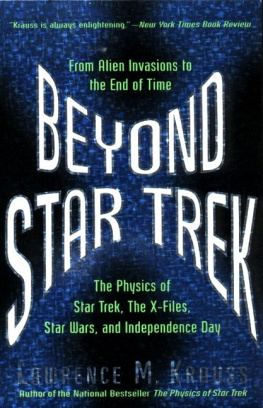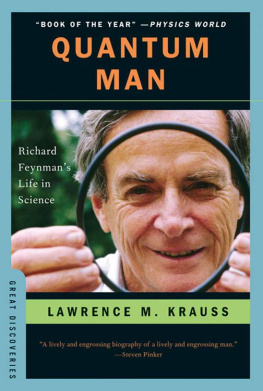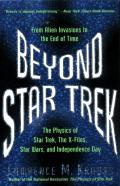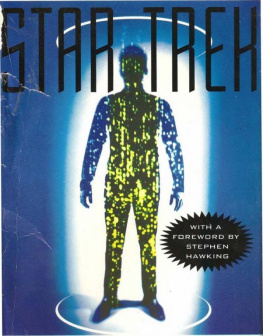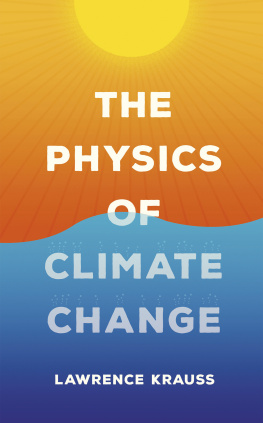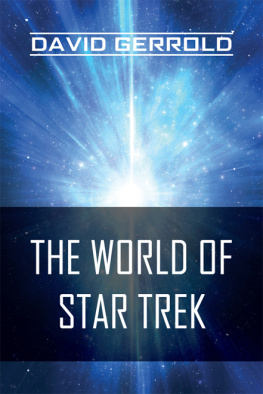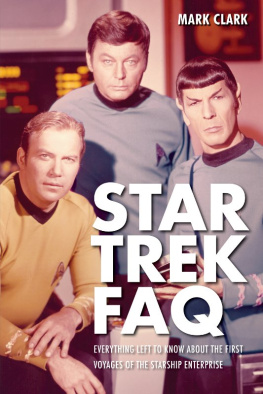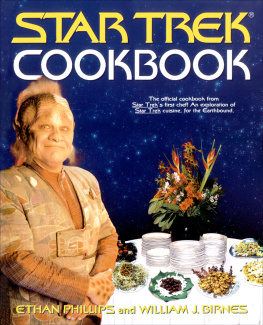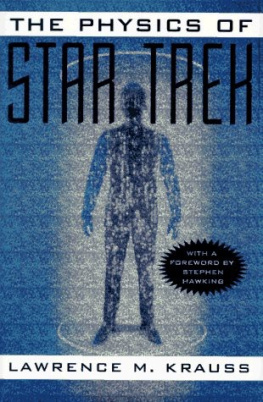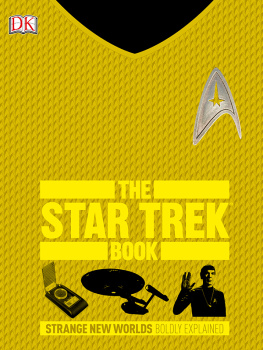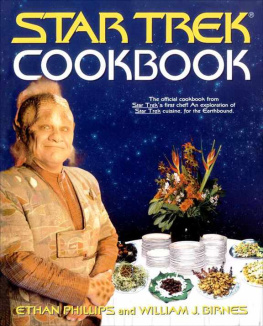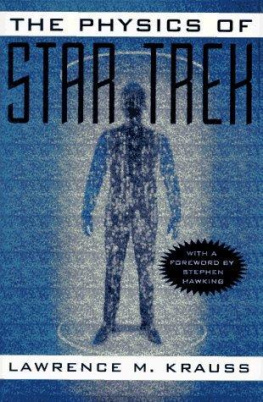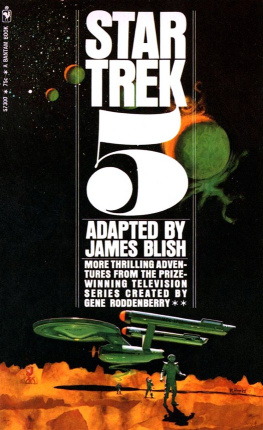Lawrence M. Krauss - Beyond Star Trek
Here you can read online Lawrence M. Krauss - Beyond Star Trek full text of the book (entire story) in english for free. Download pdf and epub, get meaning, cover and reviews about this ebook. year: 1997, publisher: HarperCollins, genre: Science fiction. Description of the work, (preface) as well as reviews are available. Best literature library LitArk.com created for fans of good reading and offers a wide selection of genres:
Romance novel
Science fiction
Adventure
Detective
Science
History
Home and family
Prose
Art
Politics
Computer
Non-fiction
Religion
Business
Children
Humor
Choose a favorite category and find really read worthwhile books. Enjoy immersion in the world of imagination, feel the emotions of the characters or learn something new for yourself, make an fascinating discovery.
- Book:Beyond Star Trek
- Author:
- Publisher:HarperCollins
- Genre:
- Year:1997
- Rating:5 / 5
- Favourites:Add to favourites
- Your mark:
- 100
- 1
- 2
- 3
- 4
- 5
Beyond Star Trek: summary, description and annotation
We offer to read an annotation, description, summary or preface (depends on what the author of the book "Beyond Star Trek" wrote himself). If you haven't found the necessary information about the book — write in the comments, we will try to find it.
Beyond Star Trek — read online for free the complete book (whole text) full work
Below is the text of the book, divided by pages. System saving the place of the last page read, allows you to conveniently read the book "Beyond Star Trek" online for free, without having to search again every time where you left off. Put a bookmark, and you can go to the page where you finished reading at any time.
Font size:
Interval:
Bookmark:
BEYOND STAR TREK
FROM ALIEN INVASIONS TO THE END OF TIME
Lawrence M. Krauss

v1.2 (2011.11)
In Memory of Carl Sagan
1934-1996
CONTENTS
PROLOGUE
These are the days of miracle and wonder.
Paul Simon
I have been asked innumerable times since the publication of my last book, The Physics of Star Trek, to talk about the relationship of science to science fiction. I think the connection is a simple one: We are all inspired by the same questions.
I also believe that the questions that scientists and writers of science fiction wonder about are essentially universal and time invariant. They are the subject of every ages fascination, reflected in its literature, art, and drama, and its science. The specific miracles change with time, as we learn about the world; as certain mysteries are unveiled, others are born. Think about a vibrant flower. Could such a wonderful thing really have evolved from primordial sludge? Yes. But lets go beyond this rather tired question and examine the flower further. It may have a beautiful pattern visible only in ultraviolet light, which a bee can sense. Who ordered that? Or think about the myriad chemical reactions going on in the bees eye, which turn individual packets of pure energy into the same visual picture each time the bee scans the flower, in spite of the fact that these reactions are governed by probabilistic laws and the very molecules that respond to the light cannot be said even to exist in any specific state before, and sometimes after, absorbing the light. Deep inside the bees brain and our own, the mysterious quantum-mechanical universe turns into the classical, predictable universe. How? And why are we self-aware and not the bee? Do we represent the only full consciousness in the universe? Are there extraterrestrial intelligences conscious of us now? How will we ever know?
All the miracles of our own existence and others can be expressed in scientific terms. But the issues are just as engaging to anyone who simply wonders, What if? However, while the best science fiction arouses our interest by capturing the drama and excitement inherent in the What if? questions, it generally leaves the answers hanging. Modern science holds the key to knowing what is possible and what isnt.
Celebrating the connection between science and popular culture is therefore a natural way to set out the ideas that drive the modern scientific enterprise. Moreover, it can be a lot of fun. I have chosen here to go beyond Star Trekto range over a larger collection of examples and anecdotes, and to treat issues that more widely permeate our culture. Im not abandoning Trekkers, just, I hope, opening the door for an audience who may not stay up to watch the reruns every night. I hope, too, that those readers who may have been waiting for The Wrath of Krauss will not be disappointed. The inspiration for much of what I will discuss here has been derived from matters raised in thousands of e-mails and letters, and in conversations I have had with readers over the past 2 yearsand, as you will see, Star Trek is never far away. The enthusiastic response to the previous book has been a great gift for me. I hope this one will be an adequate, if partial, repayment.
So, buckle up. Here we go again.
SECTION ONE
THEYLL BE COMIN ROUND THE MOUNTAIN
SCULLY: Theres a marsh over there. The lights may have been swamp gas Its a natural phenomenon, in which phosphine and methane rising from decaying organic matter ignite, creating globes of blue flame.
MULDER: That happens to me when I eat Dodger Dogs.
CHAPTER ONE
CHOOSE YOUR POISON
Its just that in most of my work, the laws of physics rarely seem to apply!
Fox Mulder
A dark, ominous shadow descends over your house. The furniture starts to rattle, the walls and ceiling vibrate, and you hear a strange whistling in your ears. You rush to the window to see whats causing all the commotion. Only 5,000 feet off the ground, a huge black disk at least 15 miles across floats motionless in the sky, blotting out the sun, darkening the entire neighborhood. You run to the kitchen sink and splash cold water on your face. Surely this cant be happening! Back to the window once more, and the massive object is still there. You scurry out to the garage to get away, then you remember something. Hurrying back to the house, you pick up the phone to call your daughters school, but the line is dead. You lose bladder control. The realization terrifies you. Aliens have arrived! As you begin to black out, your last thought is, I am about to become toast!
Hold on! While F-14s or computer viruses or even H. G. Wellss microbes might not be able to protect us from the sheer terror generated by the attack of a 15-mile-wide floating saucer, Isaac Newton wouldsort of. Newtons laws would ensure that youd probably be dead before you had time to get terrified. Even 350 years after the fact, Hollywood still has to get past Newton before it can indulge in all the fancy stuff. Alas, the aliens piloting the Mother Ship in the blockbuster Independence Day seem to have skipped that semester back home
What instead might actually transpire if we were visited by the Mother Ship and her children reads more like a scenario for the Salem witch trials.
DEATH BY DROWNING
A Mother Ship full of aliens bent on ending life on Earth may not need to send out a squadron of huge flying saucers in order to destroy our major cities. Long before the first shadow fell on the Empire State Building or the Hollywood sign, New York might be underwater and Los Angeles could be leveled by earthquakes. Early in Independence Day, the telemetry tracking the approach of the Mother Ship reveals that it is almost 1/4 the mass of the Moon. Before it releases its squad of death saucers, the mammoth ship pulls into a geostationary orbit above the Earththe same sort of orbit the U.S.S. Enterprise uses to visit a new planet. In such an orbit, a spacecraft or a satellite moves at the same rate as the planet rotates, so that it always stays directly above the same spot on the planetary surface. The large communication satellites that transmit our international messages, as well as the network of Global Positioning navigational satellites that guide our airplanes and well-equipped trekkers (the terrestrial wilderness type), sit in such orbits.
Newtons law of gravity determines how high such an orbit must be, regardless of the objects mass. It is one of the many miracles of the law of gravity that any object, no matter how heavy, must orbit at exactly the same speed as any other object at the same distance from Earth. (If that werent the case, NASA would have to design a different trajectory for every space shuttle, depending upon the weight of the astronauts inside.) The distance from Earth for an object in geostationary orbit is about 22,500 miles, or almost 1/10 the distance from Earth to the Moon. At 22,500 miles up, the gravitational attraction on the Earth of an object the mass of the Moon would be 100 times stronger than the Moons gravitational pull; since the Mother Ship is 1/4 the mass of the Moon, its gravitational pull on the Earth would be 25 times that of the Moon!
What would this do? Well, one effect might well be to close down Wall Street, because much of New York City would probably be awash. The tidal forces provoked by an object as massive as the Mother Ship would cause a catastrophic rise in sea level in various places on the Earth. At the same time, the unaccustomed tidal stresses on the Earths crust would undoubtedly induce earthquakes and volcanic eruptions in sensitive areas around the globe. Moreover, the very motion of the Earth through space would be affected, producing unpredictable effects, including possible climatic variation. When an object as heavy as 1/4 the mass of the Moon is in close orbit above the Earth, it causes the Earth to move back and forth in responseonce again, because of gravity. Adding a third massive body, with its additional gravity, to the Earth-Moon system would change the systems dynamics in possibly chaotic ways.
Next pageFont size:
Interval:
Bookmark:
Similar books «Beyond Star Trek»
Look at similar books to Beyond Star Trek. We have selected literature similar in name and meaning in the hope of providing readers with more options to find new, interesting, not yet read works.
Discussion, reviews of the book Beyond Star Trek and just readers' own opinions. Leave your comments, write what you think about the work, its meaning or the main characters. Specify what exactly you liked and what you didn't like, and why you think so.

